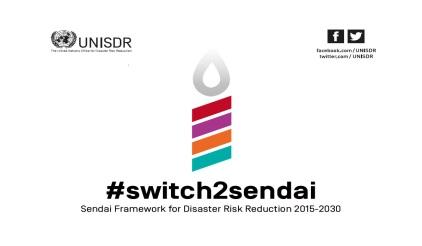What is Sendai Framework? (Part 4)
What is Sendai Framework? (Part 4)
Sendai Framework, Priorities and Targets
Priority 1. Understanding disaster risk
Disaster risk management should be based on an understanding of disaster risk in all its dimensions of vulnerability, capacity, exposure of persons and assets, hazard characteristics and the environment. Such knowledge can be used for risk assessment, prevention, mitigation, preparedness and response.
Priority 2. Strengthening disaster risk governance to manage disaster risk
Disaster risk governance at the national, regional and global levels is very important for prevention, mitigation, preparedness, response, recovery, and rehabilitation. It fosters collaboration and partnership.
Priority 3. Investing in disaster risk reduction for resilience
Public and private investment in disaster risk prevention and reduction through structural and non-structural measures are essential to enhance the economic, social, health and cultural resilience of persons, communities, countries and their assets, as well as the environment.
Priority 4. Enhancing disaster preparedness for effective response and to “Build Back Better” in recovery, rehabilitation and reconstruction
The growth of disaster risk means there is a need to strengthen disaster preparedness for response, take action in anticipation of events, and ensure capacities are in place for effective response and recovery at all levels. The recovery, rehabilitation and reconstruction phase is a critical opportunity to build back better, including through integrating disaster risk reduction into development measures.
The seven global targets help in measurable assessment of the progress in achieving the outcome of the Sendai Conference:
1. Substantially reduce global disaster mortality by 2030, aiming to lower average per 100,000 global mortality between 2020-2030 compared to 2005-2015;
2. Substantially reduce the number of affected people globally by 2030, aiming to lower the average global figure per 100,000 between 2020-2030 compared to 2005-2015;
3. Reduce direct disaster economic loss in relation to global gross domestic product by 2030;
4. Substantially reduce disaster damage to critical infrastructure and disruption of basic services, among them health and educational facilities, including through developing their resilience by 2030;
5. Substantially increase the number of countries with national and local disaster risk reduction strategies by 2020;
6. Substantially enhance international cooperation to developing countries through adequate and sustainable support to complement their national actions for implementation of the framework by 2030;
7. Substantially increase the availability of and access to multi-hazard early warning systems and disaster risk information and assessments to the people by 2030.
International Day for Disaster Reduction, held every 13 October, celebrates how people and communities around the world are reducing their exposure to disasters and raising awareness about the importance of reining in the risks that they face. The 2016 edition marks the launch of the new “Sendai Seven” campaign, centered on the seven targets of the Sendai Framework.

Links:
http://www.unisdr.org/we/coordinate/sendai-framework
https://en.wikipedia.org/wiki/Sendai_Framework_for_Disaster_Risk_Reduction
